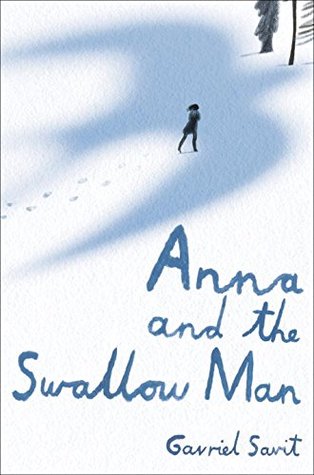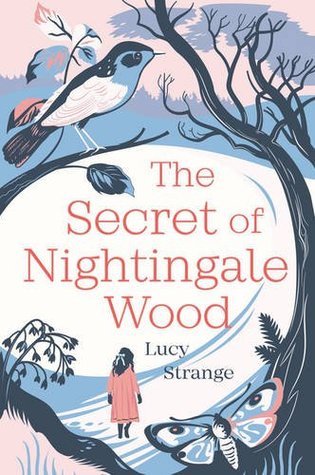Wednesday, 10 May 2017
The Hate U Give
Some people read to find a point of recognition - to find the comfort of their own reality reflected back at them. There are not enough books in which African-Americans feature as the main characters; this is indisputable, it's unfair and it's a problem. For that reason alone, The Hate U Give is a worthwhile book - and yet it is so much more than just a tick on anyone's diversity checklist. Just as importantly, we read to learn about human experiences unlike our own. We read to broaden our perspective. There is nothing quite like reading for developing empathy, and I cannot imagine reading this book without feeling a great deal of that quality for its gutsy narrator and her truly lovable and admirable family. It's a thoughtful, provocative book for sure, but it's also a wonderfully entertaining one.
Angie Thomas tackles a difficult and important subject matter - racism in contemporary America - and she tackles it head-on. At the beginning of the book, Starr and her friend Khalil are pulled over by a policeman as they are leaving a party. The policeman gives no explanation for stopping them, and Khalil makes the mistake of not being obsequious enough - and of not keeping his hands completely and innocently in the policeman's sight line at all times. The policeman makes assumptions first, shoots second, and starts the rationalisations as his third and next move. Meanwhile, a young man has been killed for pretty much no reason at all - except for the fact that he is black, and therefore assumed to be up to no good. Thomas could be lifting this storyline from the newspapers, and indeed, in some ways she is doing just that. There have been some appalling murders of unarmed black men in the US in recent years, and Thomas makes no bones about the fact that she is responding directly to the tragic statistics that have led to the Black Lives Matter movement. Racism comes in all shades and nuances, though, and Thomas is just as adept at illuminating the grayer areas as she is at dark tragedy. 16 year old Starr is a particularly balanced narrator because she straddles two worlds: the 'white' world of her private suburban school and the poor, 'black' world of the urban ghetto where she and her parents have been raised.
Thomas shows, both fairly and realistically, the challenges that poor black communities face. In a Vanity Fair article from November 2013, famous rapper Jay-Z talked about being a drug dealer when he was a young man. Not only does he refer to the 'inescapability' of crack cocaine, but also the fact that drug dealing is the most efficient way out of poverty - at least in the short term. "I was thinking about surviving. I was thinking about improving my situation. I was thinking about buying clothes." Thomas does not shy away from the vexed issue that drugs are for communities like the one that Starr grows up in. Drugs, crime, violence and broken families are all just components of the same problem. Thomas does a terrific job - mostly through the character of Starr's father - of making historical and political connections to the why and how of drugs destroying families and communities. (I would also recommend the documentary Thirteenth, currently showing on Netflix, to any curious and concerned reader of this book.)
I found Starr's voice vibrant and compelling; in my opinion, her story is unputdownable. However, I do know several adult readers who could not get past the urban slang and profanity. What struck me as a strong authentic voice - one that will really appeal to teenagers - does not, perhaps cross over so well to an adult reading audience. I would not recommend this to teens under the age of 14, and I will readily acknowledge that more conservative parents will probably have objections even then. I do believe this, though: this is the world, raw and realistic, that many people have to live in. Ultimately, there is also hope in this story - and that is one of the crucial points which makes it a YA novel. Starr does the right, brave thing and her family is behind her all the way - a wonderful source of strength.
Stacy Nyikos has also reviewed The Hate U Give on her blog Out There
Please visit the Barrie Summy blog for more fresh book reviews.
Labels:
Angie Thomas,
racism,
The Hate U Give
Wednesday, 5 April 2017
Anna and the Swallow Man
As a parent and educator, I have often thought about the question of how (and when) we introduce the more unpalatable, more disturbing 'stories' from our own human history. I was about 12 when I read The Diary of Anne Frank for the first time, and not much after that, I watched the television series Holocaust. Such cruelty, such kindness, such bravery; such despondency, such hopefulness and sheer determination to live: how do we reconcile those completely opposite human behaviours and feelings? How do we even begin to make sense of them? The vast, complicated story of World War II is one that keeps getting told, and perhaps there are some who would argue that we don't need another book about this historical time period. Personally, I still find the subject fascinating; but I would also argue that in a book as good as this one, the historical background - while obviously not irrelevant - is also not entirely critical for an appreciation of what this author achieves.
The book begins in Krakow, Poland on November 6, 1939. Anna has just become orphaned, although she doesn't understand that yet. Her father, a linguistics professor, has been rounded up by the Gestapo - along with the other professors in the city. He will not die immediately, but he will disappear from Anna's life forever. Anna is waiting in the street when a tall, thin man appears. He is a man without a name, and a man who wishes to remain anonymous. The man can conjure birds from the sky; Anna is reminded of the wise King Solomon, but Solomon is a bad, dangerous name to have in Poland in 1939. A twisting of the word Solomon, an association with the swallow that alights on her finger, and the tall, thin man becomes Anna's Swallow Man. There is much bird imagery in this book; like birds, the two main characters are constantly migrating - not so much with the seasons, but just to avoid being noticed. Their looping peregrinations through the forests and wetlands of Polands take them nowhere but always away from present danger, and eventually through the years. Their goals are twofold: to avoid capture, and to stay alive.
Both Anna and the Swallow Man speak a number of languages, but the language of "Road" becomes their primary tongue. The language of Road is one of subtle adaptation; Anna learns that you become whichever passport or accent you need to be in order to blend in. Road has different rules; in Road, not telling the truth is not the same as lying. Anna's first lesson is that "people are dangerous. And the more people there are in one place the more dangerous the place becomes." Her second lesson is that "human beings are the best hope in the world of other human beings to survive." Think about how true that is . . . not just in World War II, but at any time.
Savit is certainly not the first writer to use the naive child's perspective as a way of approaching horrors more indirectly, more obliquely. John Boyne's The Boy in the Striped Pyjamas definitely comes to mind; and while some readers love that book, others deplore it for its historical inaccuracies. While Savit employs all of the literary techniques of allegory and analogy - and there are even touches of magical realism - there is something more fundamentally true about his book. Despite its 7 year old protagonist, though, this is not a children's book. I would recommend it for young adults with large vocabularies, a philosophical bent and a tolerance for ambiguity; and that goes for adult readers, too.
Click icon for more
book review blogs
@Barrie Summy
book review blogs
@Barrie Summy
Tuesday, 3 January 2017
The Secret of Nightingale Wood
This is a children's book suitable for all ages, but probably best appreciated by adults who are still love with their childhood favourites: The Secret Garden, A Little Princess, The Wind in the Willows, Alice in Wonderland and fairy tales of all descriptions. Author Lucy Strange deliberately borrows some of the tropes from the best-loved classics, but fashions them into something original. Set just after World War I, the story explores madness and loss - and the sometimes fine line between fantasy and reality. Mental health is very fashionable in children's and YA literature right now, but Strange (such an apt name) very much suits her themes to her era. The rather brutish and patriarchal attempts to deal with shell-shock and the depression brought on by profound grief are a powerful, dark spectre in this book. Sometimes what is lurking in the woods is ominous . . . and sometimes it is just sad and lonely. The influence of fairy tales is quite strong in this book. And as in all the best childhood classics, it takes a brave, resourceful child to heal the broken world. I did worry, at first, that there was something too perfect and paint-by-number about this book, but I was completely won over by the ending.
The protagonist of the book - Henrietta, called "Henry" - is having to cope with way too much trauma. Her older brother has died in a tragic accident; her mother has retreated into a drug-addled depression; her father is permanently away on business; and a creepy, ominous doctor is trying to make decisions for the family which Henry instinctively feels are wrong. Henry copes by turning to her beloved stories. They are her companions in loneliness, but they also offer safety, comfort and even guidance as she tries to navigate the difficulties of her life. The thing for Henry, though, is figuring out the difference between inspired by stories - and potentially being misled by them. The author has a very deft way of guiding Henry through her own imaginative thicket. This extremely accomplished first novel definitely has a touch of magic in it.
"Mama was quiet for a moment and then she said, 'What a wonderful place the world would be, Hen, if everyone had your imagination.'"
The protagonist of the book - Henrietta, called "Henry" - is having to cope with way too much trauma. Her older brother has died in a tragic accident; her mother has retreated into a drug-addled depression; her father is permanently away on business; and a creepy, ominous doctor is trying to make decisions for the family which Henry instinctively feels are wrong. Henry copes by turning to her beloved stories. They are her companions in loneliness, but they also offer safety, comfort and even guidance as she tries to navigate the difficulties of her life. The thing for Henry, though, is figuring out the difference between inspired by stories - and potentially being misled by them. The author has a very deft way of guiding Henry through her own imaginative thicket. This extremely accomplished first novel definitely has a touch of magic in it.
"Mama was quiet for a moment and then she said, 'What a wonderful place the world would be, Hen, if everyone had your imagination.'"
Subscribe to:
Posts (Atom)



